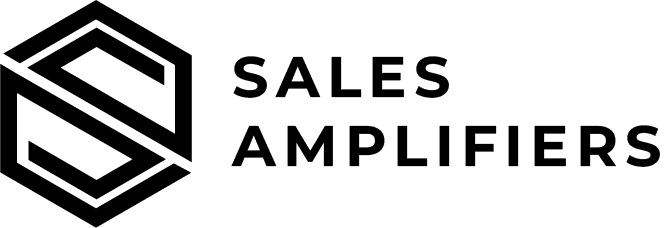- By Noor Ur Rehman
- February 7, 2025
- No Comments
In the ever-evolving landscape of digital marketing, mastering Keyword Research & Optimization is paramount for achieving online visibility and driving organic traffic. As we navigate through 2025, the strategies and tools at our disposal have advanced, necessitating a comprehensive understanding of current best practices. This guide delves into the intricacies of keyword research and optimization, offering insights tailored to the modern digital environment.
Table of Contents
ToggleThe Evolution of Keyword Research & Optimization
Keyword research & Optimization has transitioned from a straightforward process of identifying popular search terms to a nuanced practice that considers user intent, search context, and the dynamic nature of search algorithms. Traditional methods focused primarily on high-volume keywords; however, the emphasis has shifted towards understanding the specific needs and behaviors of users. This shift is driven by advancements in search engine algorithms that prioritize user experience and content relevance.
Understanding User Intent
User intent refers to the underlying purpose behind a user’s search query. Recognizing and aligning with this intent is crucial for effective keyword research & optimization. There are four primary types of search intent:
- Informational Intent: The user seeks information or answers to specific questions.
- Navigational Intent: The user aims to locate a particular website or page.
- Transactional Intent: The user intends to make a purchase or complete a specific action.
- Commercial Investigation: The user is comparing products or services before making a purchasing decision.
By categorizing keywords based on user intent, marketers can create content that directly addresses the needs of their target audience, thereby enhancing engagement and conversion rates.
Advanced Keyword Research & Optimization Strategies
In 2025, effective keyword research encompasses several advanced strategies:
1. Leveraging AI-Powered Tools
Artificial Intelligence (AI) has revolutionized keyword research by providing deeper insights into user behavior and search patterns. Tools equipped with AI capabilities can analyze vast datasets to identify emerging trends and long-tail keywords that may not be immediately apparent through traditional methods. For instance, platforms like Ahrefs and SEMrush utilize AI to offer comprehensive keyword analytics, including search volume, keyword difficulty, and competitive analysis.
2. Focusing on Long-Tail Keywords
Long-tail keywords, which are longer and more specific phrases, often have lower search volumes but higher conversion rates. These keywords reflect more precise user intents and are less competitive, making them valuable targets for optimization. For example, instead of targeting a broad keyword like “running shoes,” focusing on “best breathable running shoes for summer” can attract users with a clear purchasing intent.
3. Utilizing Semantic Search and Latent Semantic Indexing (LSI)
Search engines have become adept at understanding the context and semantics of search queries. Incorporating semantically related terms and LSI keywords into content helps in aligning with this contextual understanding, thereby improving relevance and ranking potential. For instance, when optimizing for the keyword “digital marketing,” including related terms like “online advertising,” “SEO strategies,” and “content marketing” can enhance content visibility.
4. Analyzing Competitor Keywords
Studying the keywords that competitors rank for provides insights into potential opportunities and gaps in your own strategy. Tools like Moz and SpyFu allow marketers to assess competitor keyword performance, uncovering high-value keywords that can be targeted to gain a competitive edge.
On-Page Optimization Techniques
Once relevant keywords are identified, implementing them effectively on your website is crucial. Key on-page optimization techniques include:
1. Crafting SEO-Friendly Titles and Meta Descriptions
Incorporate primary keywords into titles and meta descriptions to signal relevance to search engines and attract user clicks. Ensure that these elements are compelling and accurately reflect the content to improve click-through rates.
2. Structuring Content with Header Tags
Use header tags (H1, H2, H3, etc.) to organize content hierarchically. Including keywords in these headers enhances readability and signals content structure to search engines, aiding in better indexing and ranking.
3. Optimizing Images with Alt Text
Search engines cannot interpret images directly; therefore, using descriptive alt text with relevant keywords helps in image indexing and can drive traffic through image search results.
4. Enhancing URL Structures
Create clean and descriptive URLs that include target keywords. Avoid lengthy or complex URLs, as they can be off-putting to users and challenging for search engines to crawl.
The Role of Content Quality and E-E-A-T
In 2025, search engines place significant emphasis on content quality, guided by the principles of E-E-A-T: Experience, Expertise, Authoritativeness, and Trustworthiness. To align with these principles:
- Experience: Demonstrate firsthand experience in the subject matter through detailed and insightful content.
- Expertise: Showcase deep knowledge and understanding of the topic, supported by credentials or proven experience.
- Authoritativeness: Build authority by earning mentions and backlinks from reputable sources within the industry.
- Trustworthiness: Establish trust through transparency, accurate information, and a professional presentation.
By adhering to E-E-A-T guidelines, content not only ranks better but also fosters user trust and engagement.
Technical SEO Considerations
Technical SEO ensures that a website meets the technical requirements of search engines for crawling and indexing. Key considerations include:
1. Mobile Optimization
With the majority of users accessing the internet via mobile devices, ensuring that your website is mobile-friendly is imperative. Responsive design, fast loading times, and intuitive navigation enhance the mobile user experience and are favored by search engines.
2. Site Speed
Page loading speed is a critical ranking factor. Optimize images, leverage browser caching, and minimize code to improve site performance. Tools like Google PageSpeed Insights can provide
Conclusion
Keyword research & optimization remain the backbone of a successful SEO strategy. As search engines evolve, prioritizing user intent, content relevance, and search experience is more important than ever. By leveraging AI-driven tools, long-tail keywords, and semantic search optimization, businesses can create content that not only ranks higher but also provides real value to their audience.




